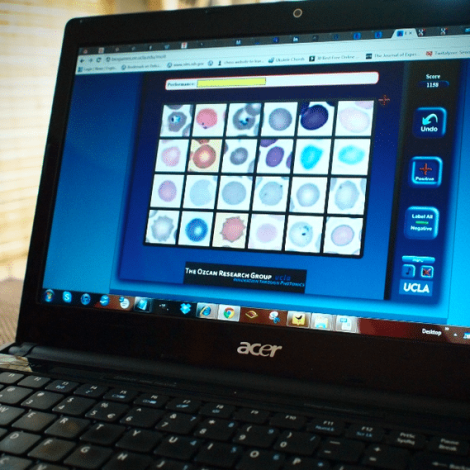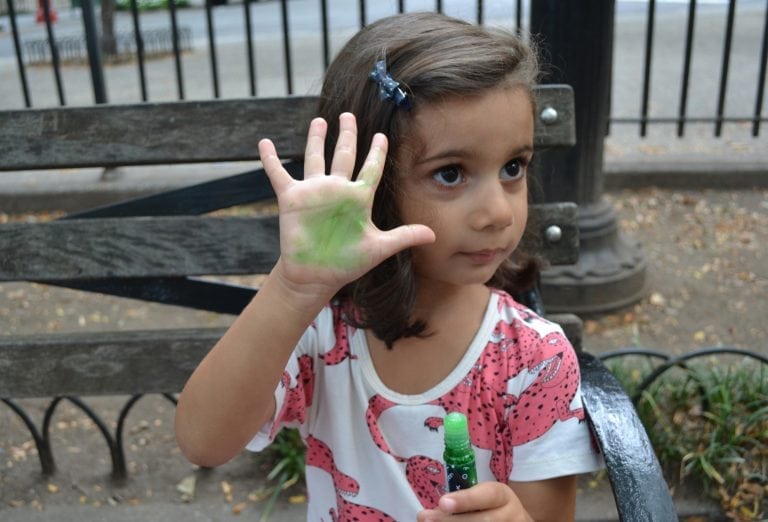Do you have a video game on pause while you’re reading this? If so, you have lots of company. There may be 500 million people worldwide who play video games for an hour per day, says the game designer and writer Jane Mcgonigal.
That’s not to mention the 5 million Americans who play about 40 hours per week. Combined, there may be at least half a billion man hours and a lot of hardware in video gaming. Some game designers are learning to tap into that labor pool and put our world’s distracted minds to work for science.
Gamers are already at play diagnosing malaria. Aydogan Ozcan and Sam Mavandadi at the University of California, Los Angeles, created a kind of picture-hunt game to crowdsource the tedious work of spotting plasmodium parasites in red blood cells.
To date, more than 1000 registered gamers in 70 countries have generated more than 1 million diagnoses, Ozcan told E4C.
As the platform improves, Ozcan says, “We envision connecting minimally-trained healthcare workers together using these digital interfaces the create what we call the ‘super pathologist.’”
After a quick tutorial, gamers who have never seen a blood sample before can pinpoint infections from a batch of cells on a grid with accuracy. In fact, the newbies can nearly match the experts, coming within 1.25 percent of expert diagnostic accuracy, according to a paper the researchers published in the May 2012 edition of PloS One (pdf).
The platform is called Biogames, and it joins a growing field of games that crowdsource science and make it fun. (More fun, that is…) Foldit and EteRNA, both by Adrien Treuille at Carnegie Mellon University in Pittsburgh, Penn., make sport of predicting the ways that proteins can fold and RNA can synthesize. Foldit made headlines last year when gamers discovered the structure of an AIDS-related enzyme that had eluded scientists for a decade.
Pathology: there’s an app for it
Few people were more likely to blend media, in this case video games, with pathology. Ozcan and his lab have a history of democratizing diagnostic technology. They developed an add-on that turns a smart phone’s camera into picture-taking microscope. The device allows poorly-equipped labs, rural clinics or other workers in the field to send photos of blood or water samples to an expert for evaluation. The researcher made this workspace at E4C to highlight their progress.
Why malaria?
Help with malaria diagnosis is timely. About half of the world’s population is at risk for infection, the World Health Organization reports. The mosquito-borne parasite survives only in warm climates and most infections occur in sub-Saharan Africa. There are ongoing malaria transmissions in 99 countries worldwide, however. In 2011, there were about 216 million cases, and about 650,000 people died, according to a statistic from 2010. Most of them African children. In Africa, a child dies every minute from malaria, according to the WHO.
The good news is that prevention measures such as sleeping under a mosquito net, pest control and medical treatment have cut malaria’s mortality rate. Globally, deaths have fallen by 25 percent since 2000, and more in parts of Africa.
Is malaria just the beginning?
Ozcan and his team are improving their game with smarter algorithms to process the gamers’ responses. “As our algorithms get smarter, it will take us fewer gamers to arrive at the correct diagnosis,” Ozcan says.
In the future, the researchers plan to introduce these kinds of video-game diagnoses into developing countries that could use the help. The game may also become a cheap and fun way to improve the training and accuracy of the professionals who make these diagnoses.
Malaria is the focus for now, but the platform could potentially handle other diseases, including cancer diagnosis, Ozcan says. His lab is at work now expanding their game into a general tele-pathology tool. Some day, legions of networked gamers could help manage the growing number of recommended cancer screenings, for example. The idea kind of changes how you look at kids tapping their phone screens.

